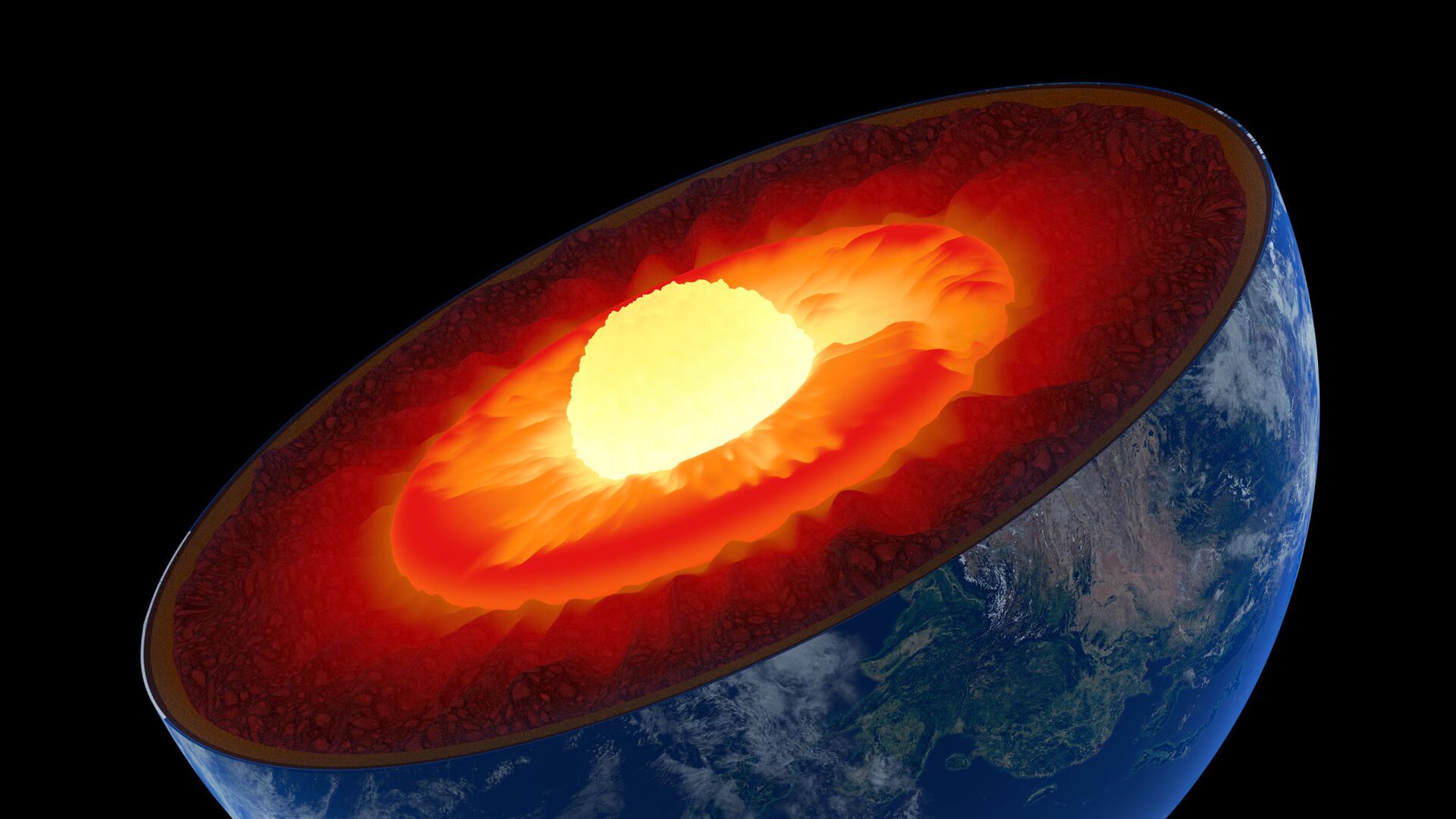Earth May Become Similar to Mars as Planet's Interior Cooling 'Faster Than Predicted' - Study
11:50 GMT 18.01.2022 (Updated: 10:42 GMT 21.04.2023)
Subscribe
Our planet Earth, which formed 4.5 billion years or so ago and was then covered by a deep ocean of magma, has been slowly cooling on the inside ever since due to a heat transfer process, as vast amounts of heat from within its interior are released to the surface, driving mantle convection and a number of tectonic activities.
Earth's molten interior is cooling at a faster pace than previously anticipated, with scientists now warning that our planet might become a barren rock like Mars or Mercury sooner than expected.
A new study examined the thermal conductivity of the minerals that form the boundary between the Earth's outer iron-nickel core and the molten fluid lower mantle above it, with the research published in Earth and Planetary Science Letters.
In their paper, “Radiative thermal conductivity of single-crystal bridgmanite at the core-mantle boundary with implications for thermal evolution of the Earth,” scientists reveal their probe into how well the boundary mineral, bridgmanite could conduct heat from the core to the surface.
To achieve this, the team, led by Professor of Experimental Mineral Physics Motohiko Murakami of ETH Zurich, Switzerland, and his colleagues from Carnegie Institution for Science developed a sophisticated measuring system. They irradiated a single crystal of bridgmanite with pulsed lasers to measure its thermal conductivity in a laboratory, under the pressure and temperature conditions simulating those of Earth’s insides.
"This measurement system let us show that the thermal conductivity of bridgmanite is about 1.5 times higher than assumed," said Murakami.
The results led them to determine that the core-mantle boundary was able to dispense so much heat that Earth’s cooling was speeding up much faster than previously expected.
While 4.5 billion or so years ago, when our planet was formed, extreme temperatu]]]]]]]]]]]]]]]]]]]]]]]]]]]]]]]]]]]]]]]]]]]]]]]]]]]]]]]]]]]]]]]]]]]]]]]]]]]]]]]]]]]]]]]]]]]]]]]]]]]]]]]]]]]]]net's surface cooled. However, the enormous thermal energy emanating from the Earth's interior drives dynamic processes, such as mantle convection, plate tectonics and volcanism.

Dynamic Earth - Earth’s Magnetic Field
The flowing of liquid metal in the outer core of the earth generates electric currents, while the rotation of our planet on its axis causes these electric currents to form a magnetic field extending around it.
Earth is made of multiple layers: the crust, mantle, outer core and inner core. If you've ever wanted to take a peek inside the Earth's layers, you can with this tasty activity. Create a cross section model using ingredients in your kitchen. https://t.co/U33tjy5Mdc pic.twitter.com/vgZ2HFCBeE
— Mining Matters (@MiningMattersCA) July 2, 2020
The latter is vitally important to sustaining life on Earth, as without it, we would be exposed to high amounts of radiation from the Sun. For example, planet Mars doesn’t have flowing liquid metal in its core, its weak magnetic field likely allowing its atmosphere to be stripped away by solar winds, rendering it uninhabitable.
The question remains how fast the Earth has been cooling and how long it might take for this process to put the lid on these heat-driven processes. As the results of the recent study were released, the team of scientists revealed that the cooling process inside earth could be accelerating.
Earth's interior: Bridgmanite—named at lasthttp://t.co/2Hn3RCB9jp pic.twitter.com/wfOXUb9MNo
— Francis Villatoro (@emulenews) December 1, 2014
When it cools, bridgmanite transforms into a mineral called post-perovskite, which is even more thermally conductive.
"Our results could give us a new perspective on the evolution of Earth's dynamics… They suggest that Earth, like the other rocky planets Mercury and Mars, is cooling and becoming inactive much faster than expected," Murakami said.
He added: "We still don't know enough about these kinds of events to pin down their timing."




